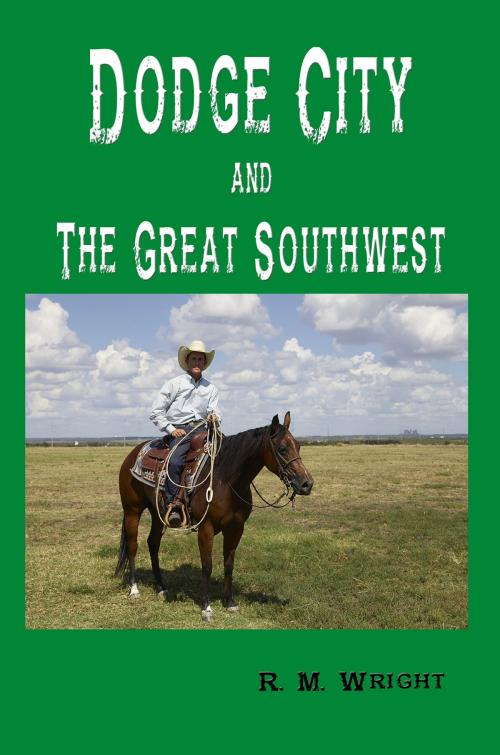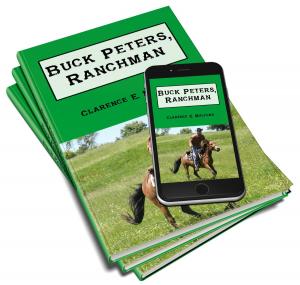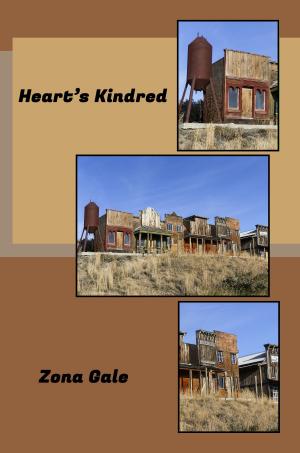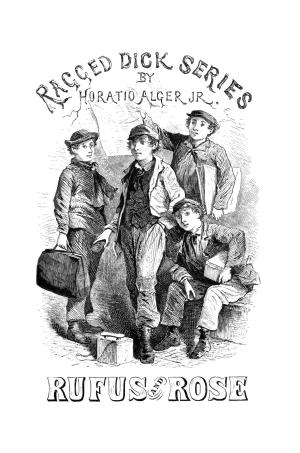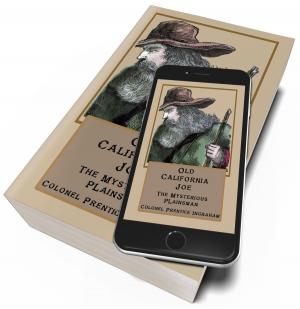Dodge City and The Great Southwest (Illustrated)
Fiction & Literature, Westerns, Action Suspense, Historical| Author: | Robert M. Wright | ISBN: | 1230000974707 |
| Publisher: | Reading Bear Publications | Publication: | March 3, 2016 |
| Imprint: | Reading Bear:Western Cowboy | Language: | English |
| Author: | Robert M. Wright |
| ISBN: | 1230000974707 |
| Publisher: | Reading Bear Publications |
| Publication: | March 3, 2016 |
| Imprint: | Reading Bear:Western Cowboy |
| Language: | English |
Few cities were founded by a man with the background of Dodge City's own Town President, Robert M. Wright. With a family that included a clerk of the U.S. Supreme Court, and a president of the Continental Congress, Wright came west at age 16 to make his mark on the world. He married his 13-year old first cousin, Alice, when he was 19. Wright rose from bullwhacker—freight wagon driver—to owner of the largest commercial empire in the area, making and losing a fortune on the cattle trade, starting trails and towns.
By the time in 1872 that he owned a general store in Dodge City, Wright was making huge amounts of money from the Santa Fe Trail, buffalo hunter, and cattle trade. Historian Dr. C. Robert Hayward, in his book "The Merchant Prince of Dodge City: The Life and Times of Robert M. Wright" quotes evidence that Wright was taking in $200,000 a month during the cattle season of 1880—over $4,000,000 today—and that with no income tax.
But in his final years Wright was asking for help selling the last of his land and cattle (only about 110 cows were listed in property tax bills, circa 1904), when in October 1906 he wrote to P.H. Pat Sughrue, Dodge City lawman, and former Ford County Sheriff, "Can't you find a buyer for my land?"
That letter, written from the The Keeley Institute For The Treatment of Alcohol, Drug and Tobacco Addiction, Kansas City, MO, also is the 'smoking gun' of Robert Wright's long trouble with drug addiction. He wrote to Sughrue, "...for I was out of my head part of the time and full of morphine part of the time..." about a business question Sughrue had sent him.
Robert was to marry his final wife the next year, young Sallie Ivens. In old age, with a new baby boy, Conner Wright, from his marriage to Sally (his 4th wife), Robert started a book to make some money. His title was Dodge City, The Cowboy Capital and the Great Southwest in The Days of The Wild Indian, the Buffalo, the Cowboy, Dance Halls, Gambling Halls, and Bad Men—no doubt one of the longest titles of any book written. He published it in 1913, and had to pay to reprint it again that same year due to a fire at the publisher in Wichita. He never made back the money he had spent to publish the book—now selling at rare book shops for hundreds of dollars. (The first edition has a color plate as the first page—the second edition, a black-and-white photograph.)
Wright claimed that the entire book is factual, yet in the Preface, N. B. Klaine stated that "most" of the events were based on facts. Which is it? We will likely never know, but that doesn't stop the book from being a great read about buffalo, dance halls, Indians, and "Bad Men." (Biography information by George Laughed.)
The book has 26 early photographs of most of the earliest notables and some of the original buildings. It might be said that the photographs alone are worth the price of the book.
Few cities were founded by a man with the background of Dodge City's own Town President, Robert M. Wright. With a family that included a clerk of the U.S. Supreme Court, and a president of the Continental Congress, Wright came west at age 16 to make his mark on the world. He married his 13-year old first cousin, Alice, when he was 19. Wright rose from bullwhacker—freight wagon driver—to owner of the largest commercial empire in the area, making and losing a fortune on the cattle trade, starting trails and towns.
By the time in 1872 that he owned a general store in Dodge City, Wright was making huge amounts of money from the Santa Fe Trail, buffalo hunter, and cattle trade. Historian Dr. C. Robert Hayward, in his book "The Merchant Prince of Dodge City: The Life and Times of Robert M. Wright" quotes evidence that Wright was taking in $200,000 a month during the cattle season of 1880—over $4,000,000 today—and that with no income tax.
But in his final years Wright was asking for help selling the last of his land and cattle (only about 110 cows were listed in property tax bills, circa 1904), when in October 1906 he wrote to P.H. Pat Sughrue, Dodge City lawman, and former Ford County Sheriff, "Can't you find a buyer for my land?"
That letter, written from the The Keeley Institute For The Treatment of Alcohol, Drug and Tobacco Addiction, Kansas City, MO, also is the 'smoking gun' of Robert Wright's long trouble with drug addiction. He wrote to Sughrue, "...for I was out of my head part of the time and full of morphine part of the time..." about a business question Sughrue had sent him.
Robert was to marry his final wife the next year, young Sallie Ivens. In old age, with a new baby boy, Conner Wright, from his marriage to Sally (his 4th wife), Robert started a book to make some money. His title was Dodge City, The Cowboy Capital and the Great Southwest in The Days of The Wild Indian, the Buffalo, the Cowboy, Dance Halls, Gambling Halls, and Bad Men—no doubt one of the longest titles of any book written. He published it in 1913, and had to pay to reprint it again that same year due to a fire at the publisher in Wichita. He never made back the money he had spent to publish the book—now selling at rare book shops for hundreds of dollars. (The first edition has a color plate as the first page—the second edition, a black-and-white photograph.)
Wright claimed that the entire book is factual, yet in the Preface, N. B. Klaine stated that "most" of the events were based on facts. Which is it? We will likely never know, but that doesn't stop the book from being a great read about buffalo, dance halls, Indians, and "Bad Men." (Biography information by George Laughed.)
The book has 26 early photographs of most of the earliest notables and some of the original buildings. It might be said that the photographs alone are worth the price of the book.
